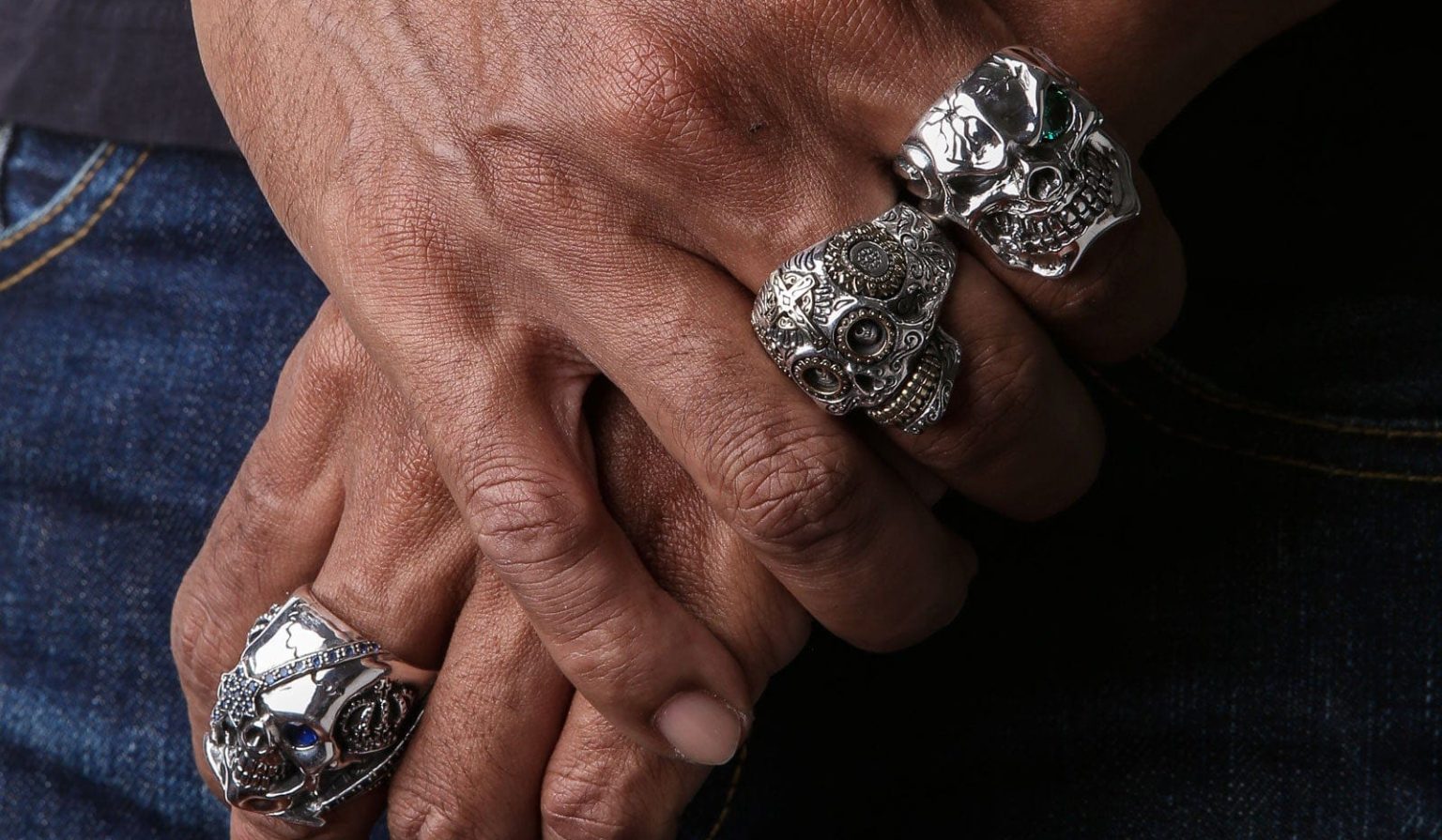The spookiest day of the year is just around the corner. Spiders with their cobwebs, jack-o’-lanterns, witches, black cats, and monsters of all sorts will soon infest the streets. The main heroes of the holiday are, however, skeletons and skulls. They sit on the lawns, they trick-or-treat, they look cute or vice versa, scare the onlookers. What’s more, skulls dangle from necklaces and bracelets and decorate fingers.
But why are they the symbols of the All Saints’ Day? And can you wear goth jewelry, rings, and other pieces of jewelry outside the holiday? We’ll try to answer these and other questions in this post.
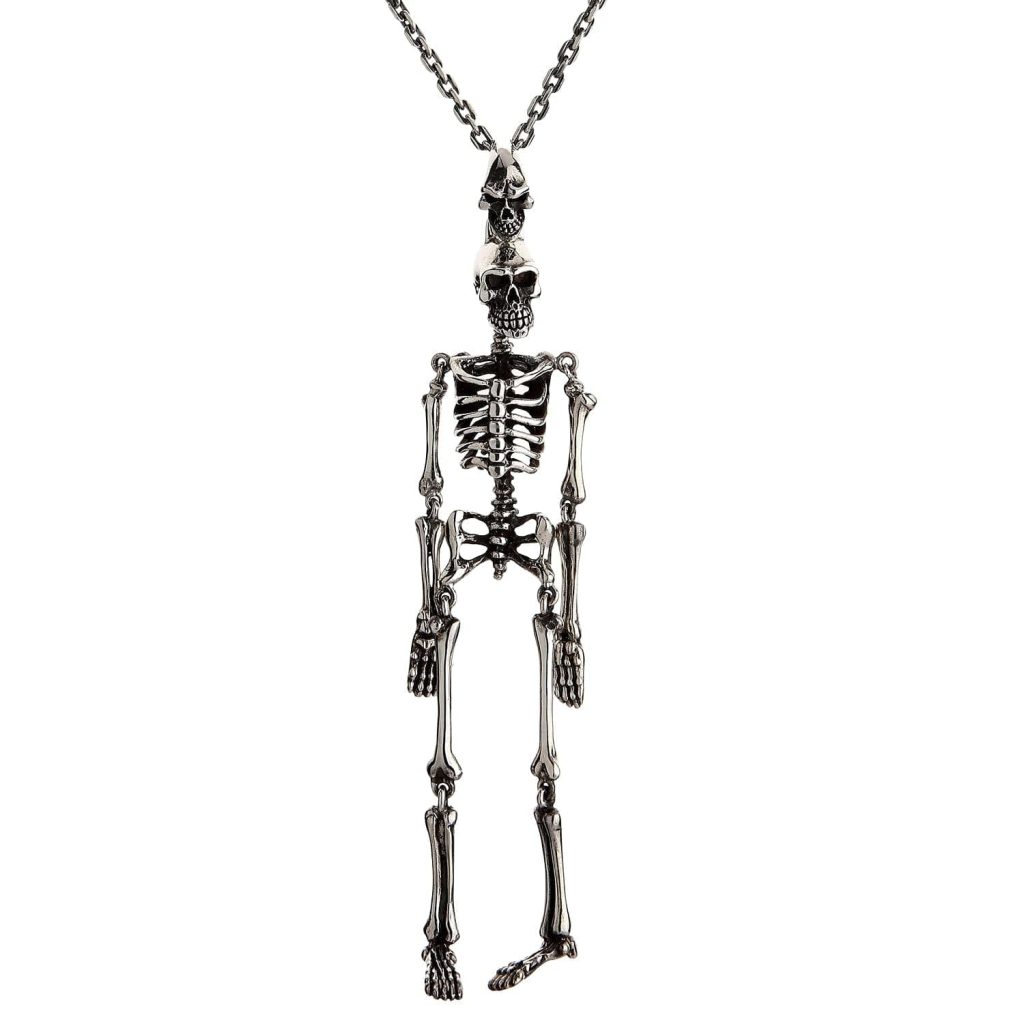
The Roots of Halloween
Ancient Celts laid the foundation for what we now know as Halloween. These people lived by a unique natural calendar that divided the year into just two seasons: summer and winter. According to their beliefs, summer drew to a close with the end of the harvest season. To them, a transition between summer and winter also signified the beginning of the New Year.
Therefore, there were three big reasons to celebrate – a break from months of hard labor, summer’s farewell, and winter’s arrival. In a modern calendar, their festive time occurred somewhere at the end of October.
So, the final harvest is complete (do you now understand why pumpkins?), and the community gathers to celebrate their hard work. But there’s a mix of emotions in the air. They feel joy and relief because they have enough food for the coming months. At the same time, it blends with nervous anticipation about the dark winter ahead.
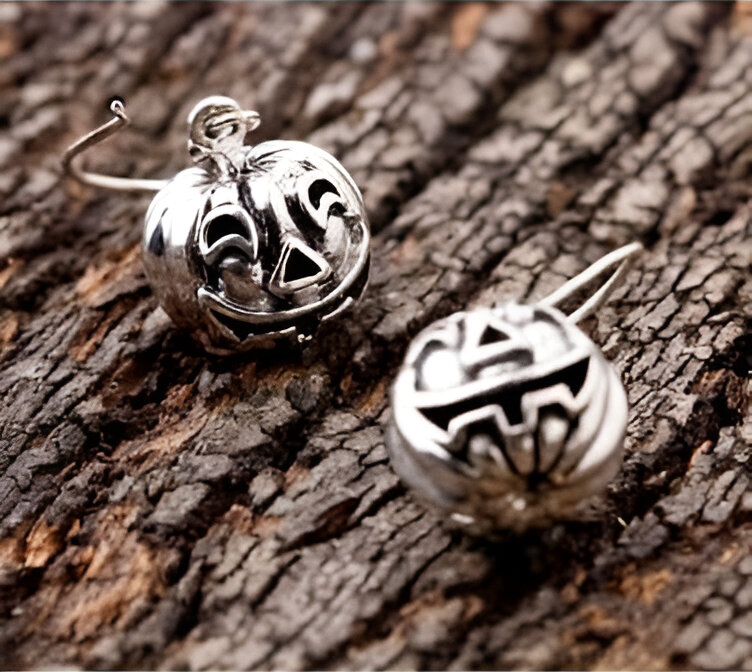
The ancient people saw winter not just as a cold season, but as a time when darkness itself gained power. It literally “ate” the daylight hours and cast nature into a deep slumber.
But the most spine-tingling aspect of this celebration – called Samhain (pronounced “SAH-win”) – was the belief that at sunset the veil between worlds parted. This meant that deceased ancestors could walk among people once again. However, they weren’t the only ones who could slip through a mystical opening. All manner of spirits, both benevolent and malicious, were thought to roam freely on this otherworldly night.
But Why Skulls and Skeletons?
So, if there were myriads of spirits, how did ancient Celts protect themselves during the supernatural season?
First of all, they lit bonfires that would burn throughout the entire winter. They served as beacons of light and protection against dark forces.
Next, villagers would don costumes made from animal skins and furs. According to their beliefs, these disguises would confuse or frighten away any malevolent spirits they might encounter. Does this sound familiar to our modern costume tradition?
And just like we leave out candy for trick-or-treaters today, the ancient Celts would place offerings of food and drink outside their homes. Their motivation was, however, less about treating children and more about appeasing wandering spirits. Otherwise, they might have caused mischief.
Perhaps most fascinating is how their vision of the dead and the supernatural gave us some of Halloween’s most iconic symbols. The Celts imagined spirits as skeletal, ethereal beings, and believed Death itself stalked the earth that night in skeletal form.
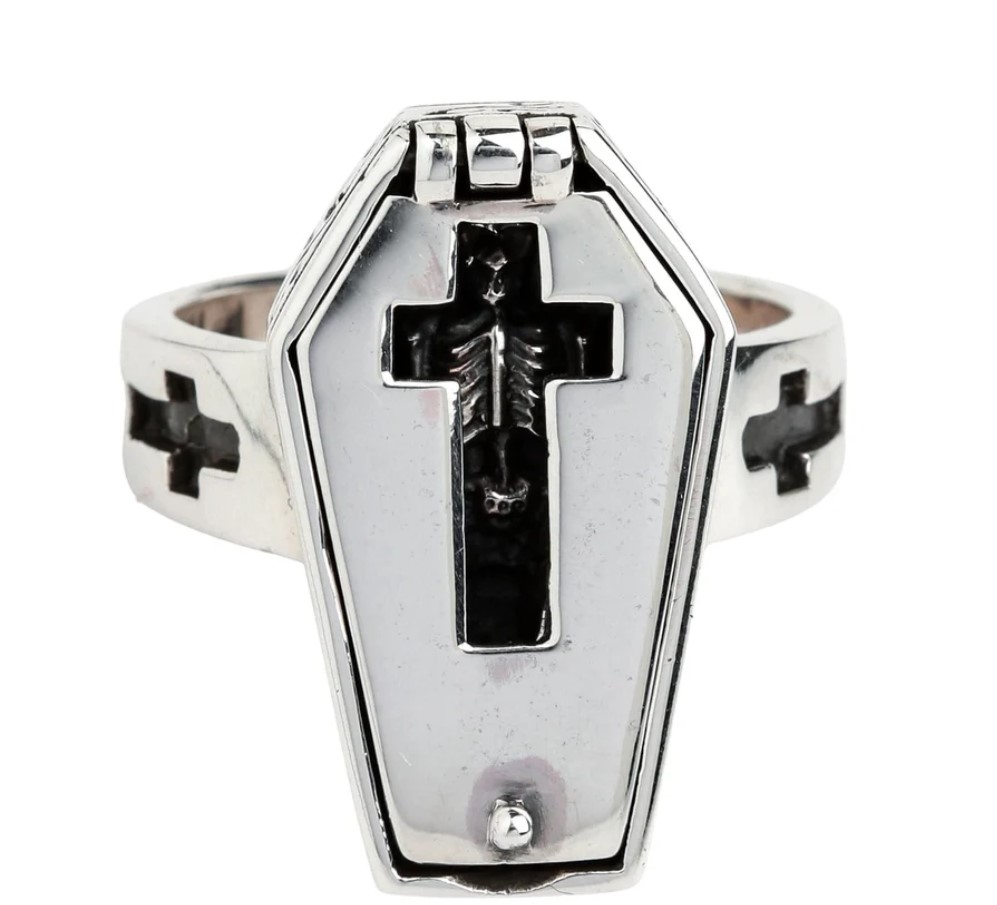
The Blend of Traditions
But skeletons and skulls became prominent Halloween symbols not only because of the Celts.
Long before Europeans arrived in the Americas, the Maya, Aztecs, and other indigenous tribes had their own relationships with death and the supernatural. The Mayans alone dedicated six different festivals throughout the year to death and ancestral spirits.
When Spanish conquistadors arrived in the Americas, instead of disappearing, these ancient death-related customs blended with Christian traditions and found new life. Prominent examples are modern Day of the Skulls or Day of the Dead celebrations.
In some families that maintain ancient traditions, relatives will actually exhume their loved ones’ remains three years after their death. In Bolivia, families carefully keep the skulls of their ancestors in their homes. Mexicans, on the other hand, clean the bones of their deceased and store them in special vessels within family crypts.
These practices stem from the Maya belief that each person possessed seven souls. Six souls ascended to heaven after the death, while one remained among the living. If it is treated with respect, the soul that remains is supposed to protect its family.
During the annual celebrations (November 1st and 2nd in Mexico, November 8th in Bolivia), ancestral skulls are placed in positions of honor in homes as well as decorated lovingly with flowers, ribbons, glitter, and tiny hats. Families light candles before them and present their offerings to thank them for their protection and guidance.
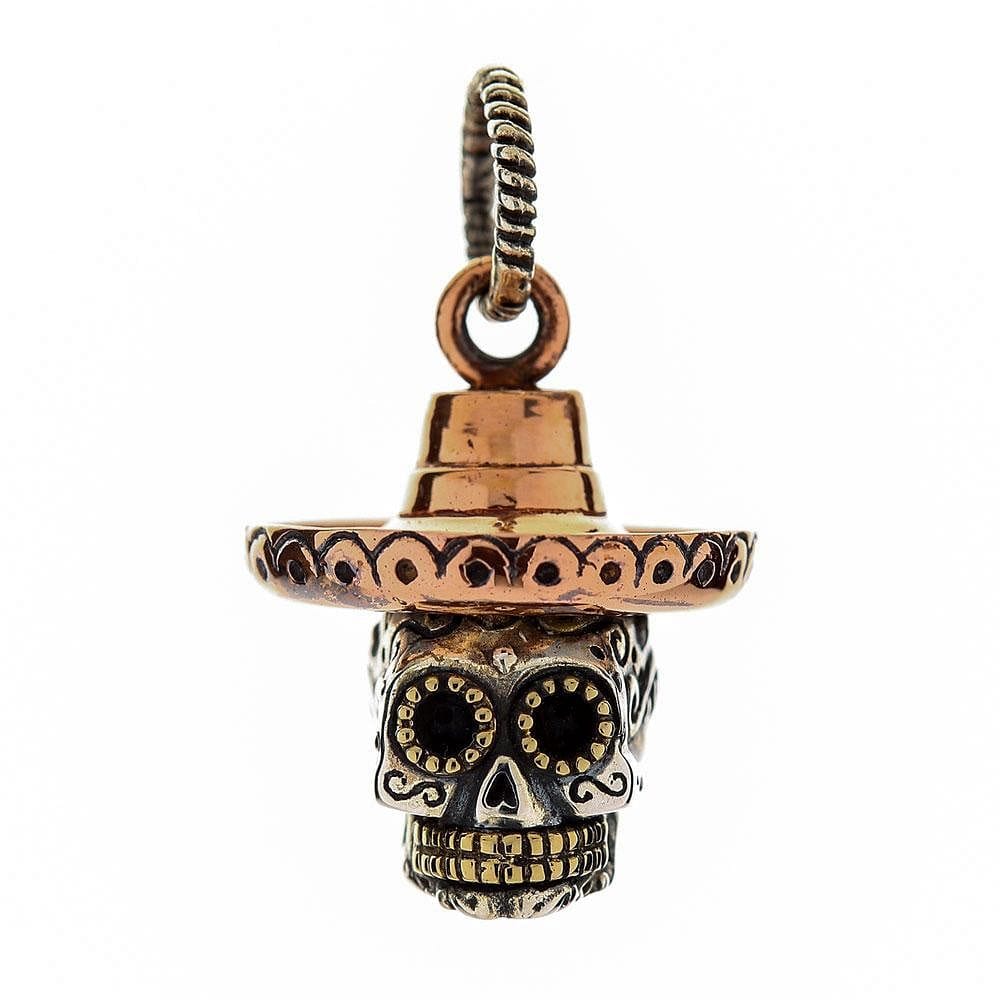
The evening celebrations, however, are even more spectacular. People carry decorated skulls in small display cases through the streets in joyous processions. The more elaborately embellished a skull, the more respect it commands. These nighttime parades culminate at local cemeteries, where the bones receive blessings in special temples.
Far from being somber occasions, these celebrations are filled with singing, dancing, and joy – even in the cemetery! Graves are decorated not with typical flowers, but with artistic representations of skeletons and skulls.
Sweet Symbols of Life and Death
Among the most captivating symbols that crossed from Day of the Dead celebrations into modern Halloween traditions are the colorful and intricate sugar skulls, or “calaveras” as they’re known in Mexico. These aren’t just candy – they’re edible works of art.
The ritual foods of the Day of the Dead blend the sacred with the sweet. Alongside special chocolate-filled loaves of bread known as “pan de muerto” (bread of the dead), sugar skulls take center stage in these celebrations. These aren’t meant to be spooky – quite the opposite! They represent a beautiful philosophy: life, just like sugar, is both sweet and fleeting.
Creating these skulls is an art form in itself. Bakers carefully decorate them with chocolate, vibrant icing, shimmering foil, and delicate flowers. The result is mouth-watering things of beauty that celebrate both life and death. On November 1st, smaller sugar skulls are offered as gifts to remember diseased children. Larger pieces are presented the next day to honor late adults.
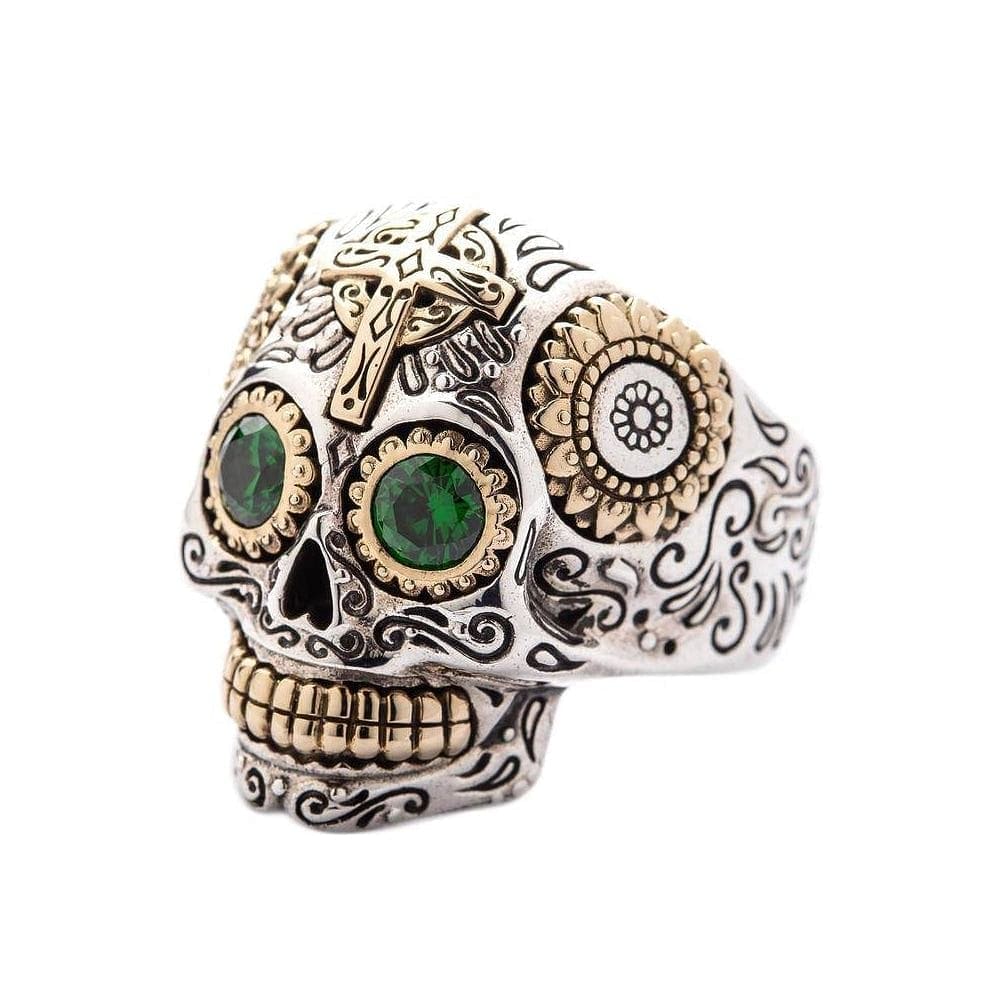
Sugar skulls can also carry personal meanings. When carrying a person’s name across its forehead, it becomes a representation of a specific soul. Families who want to keep the old traditions but don’t wish to dig up graves for the remnants of their ancestors, place sugar skulls on home altars and later carry them to cemetery gravesites as offerings.
You might wonder why these skulls are always so elaborately decorated. There’s beautiful symbolism here as well. A bare skeleton represents death and the fear it brings. But adorn it with swirls and flowers, and it will transform it into a symbol of life’s renewal and continuation. It’s a powerful reminder that death isn’t just an ending, but part of life’s ongoing cycle.
La Catrina
This tradition of embellishing death symbols took a surprising turn in 1913 with a single piece of art. Mexican artist José Guadalupe Posada created an etching of an elegant lady skeleton dressed in a magnificent gown and fancy hat – but with a skull for a head. Though originally intended as satire poking fun at upper-class Mexican women who favored European fashions, this image sparked something much deeper in the cultural imagination.
The skeleton lady, today known as “La Catrina,” quickly became linked to ancient Aztec mythology. They say it is a reincarnation of Mictecacihuatl, the goddess of death (quite a tongue-twister, isn’t it?). This connection transformed what started as social commentary into a symbol of millennia-old traditions and modern celebration. Nowadays, La Catrina represents the Mexican attitude toward death – not as something to fear, but as part of life to be celebrated.
Today, whether adorning Halloween displays or traditional Day of the Dead altars, sugar skulls, and La Catrinas justify that remembrance can be sweet. You shouldn’t be scared of death. Instead, you should celebrate life. Among other things, this involves acknowledging its end with respect.
Beyond Just a Halloween Symbol
So, here we are now, in this day and age, and hopefully more aware of the reasoning behind skulls and skeletons. Yes, they can be spooky. They can represent evil otherworldly spirits and death itself. Yes, they are intimidating.
At the same time, they beautifully connect the concepts of life and death. When the body dies, the spirit lives on. That’s why there is never an end, only a new beginning. We must celebrate it as joyfully as we can.
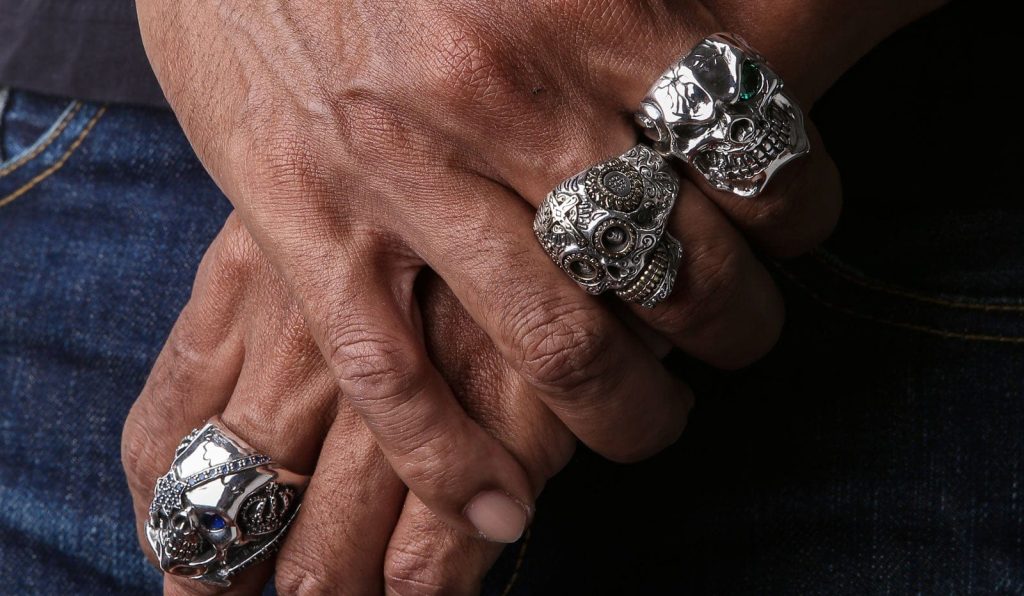
Which of these meanings do you like best?
Maybe you want to instill fear in your enemies. Then, of course, bare bones and skulls with scary grins are your best bet. They will let everyone know that you are not to be messed with. For the same reason, pirates placed the infamous Jolly Roger on their flag. For the same reason, there is a skull symbol on containers with toxic substances. For the same reason, there is a skull on historical and modern military insignia.
But maybe you want to actually tell death to eff off? Surprisingly, a skull isn’t just a representation of death, it is also a salvation from the Grim Reaper.
The great collector of souls, short after it claimed another victim, leaves its mark on their bodies. It is invisible to the human eye. But if a person already has a death mark, which is, you guessed it, a skull, it can fool the Grim Reaper. The sinister figure in a black robe sees its mark, thinks that its work has already been done, and goes away. For this reason, you can see goth earrings, rings, pendants, etc. on bikers. To them, a skull is a symbol of protection.
As Meaningful As You Want it to Be
Who said that we can’t wear beloved Halloween symbols outside of the holiday? Of course, we can!
Alright, a pumpkin might look kind of weird when it is not for All Saints’ Day, but what about sugar skulls? Didn’t these attention-grabbing artistic pieces deserve to shine 12 months a year? We believe – they do!
We can’t see why you can’t wear them all year round. First of all, they are undeniably enticing. Thanks to colorful germs, enamel, blends of various metals, including precious ones, carving, and other artistic techniques, they can become an excellent addition to your everyday and festive looks alike.
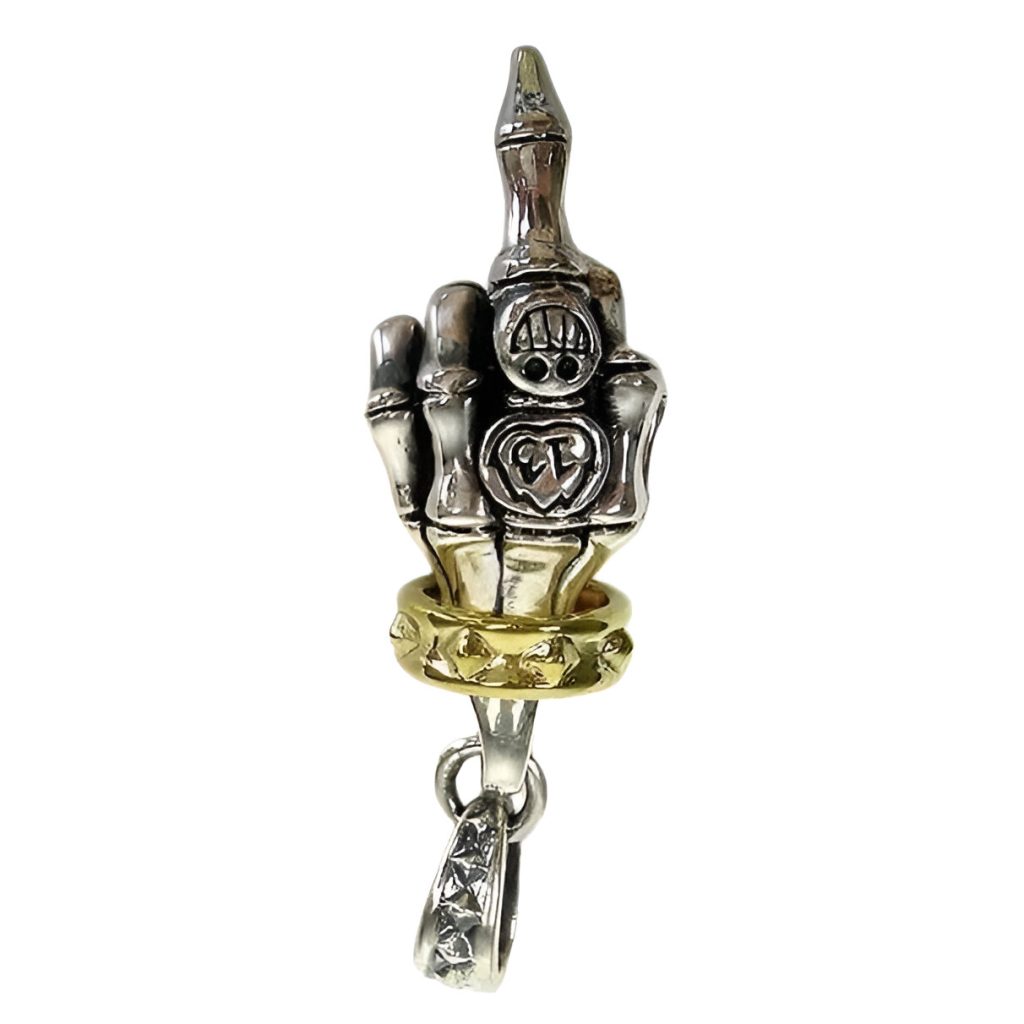
Second, who said that we should celebrate our family and ancestors only once a year? No sir, they deserve our respect at all times. That’s why a small memorabilia on your neck or in your ears will always be appropriate no matter the season.
Third, such peculiar items are an excellent way of self-expression. Colors, size, motifs, material choice, and just an overall vibe of your skull can speak volumes of who you are. Encrusted with big floral motifs and gems, it will give you away as a romantic and glamorous person who doesn’t mind attention. A small elegant silver sugar skull, on the other hand, can say that you give meaning more value than looks.
Either way, skull jewelry easily steps outside the boundaries of Halloween to transform into a meaningful staple.
Spookiness with Value
One thing, however, you should keep in mind when choosing this beloved Halloween symbol for your everyday life. Do not opt for costume jewelry! Yes, it is super affordable but it won’t be able to effectively convey the meaning you want. Would your ancestors like it if you commemorated their memory with something valueless? Would you be able to scare away death with a 10-bucks trinkle? Would you be able to intimidate your enemies with something that falls apart? No, no, and no.
That’s why, make sure to choose your everyday skull or skeleton symbol with greater care. Sterling silver pieces, especially when they are made by hand, are an affordable and effective way to make friends with otherworldly forces, especially since silver is a mysterious metal in itself.
One more way to go though – craft your own meaningful piece of jewelry. Your thought, intention, and effort will give it more power as your talisman.


